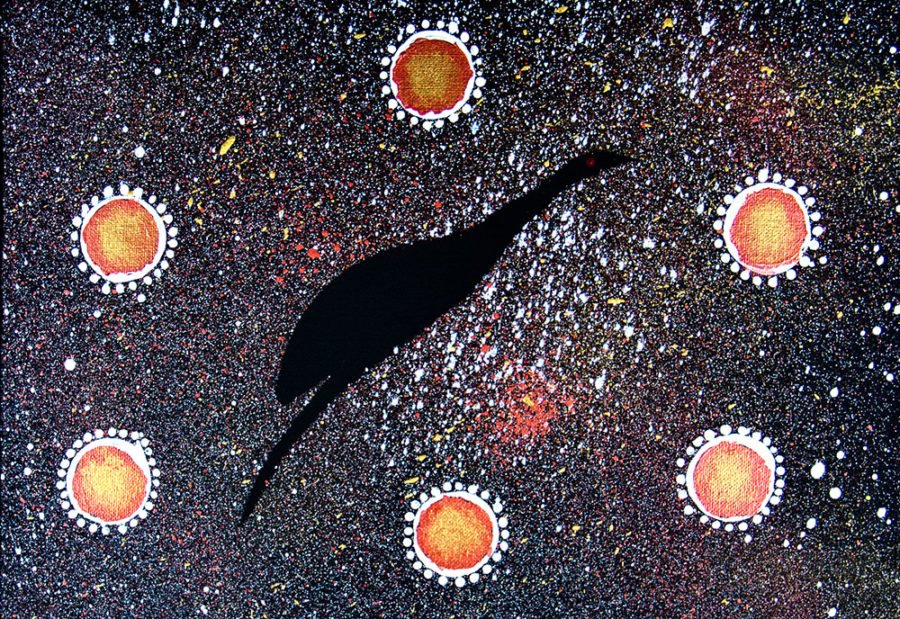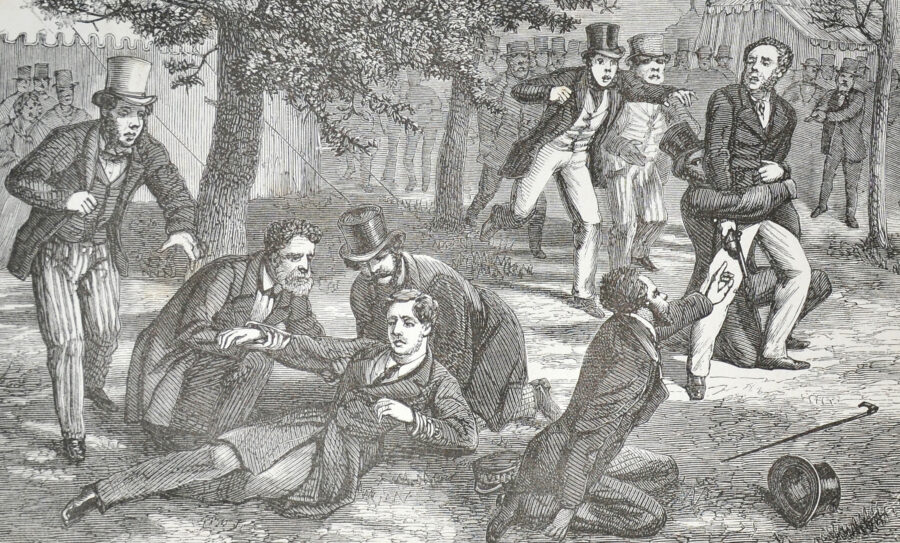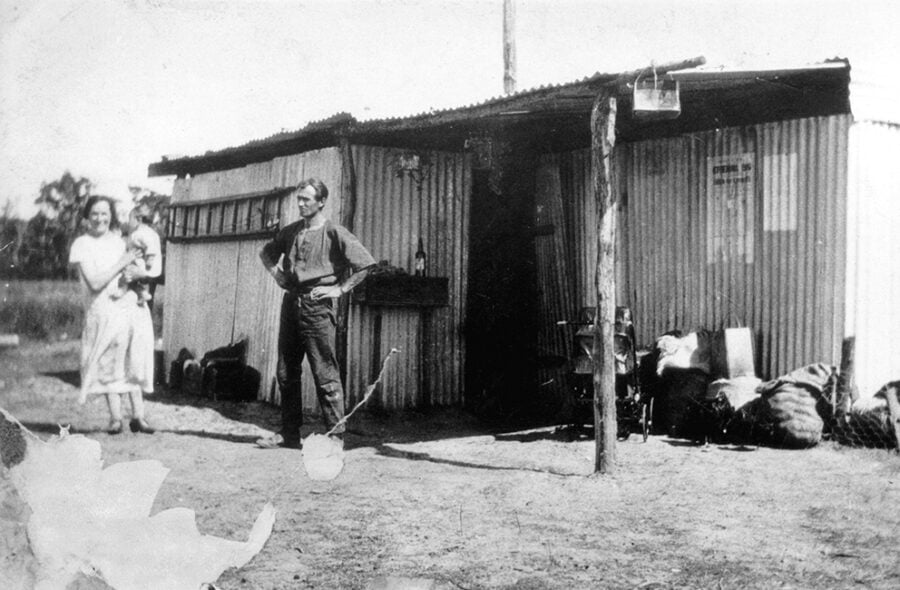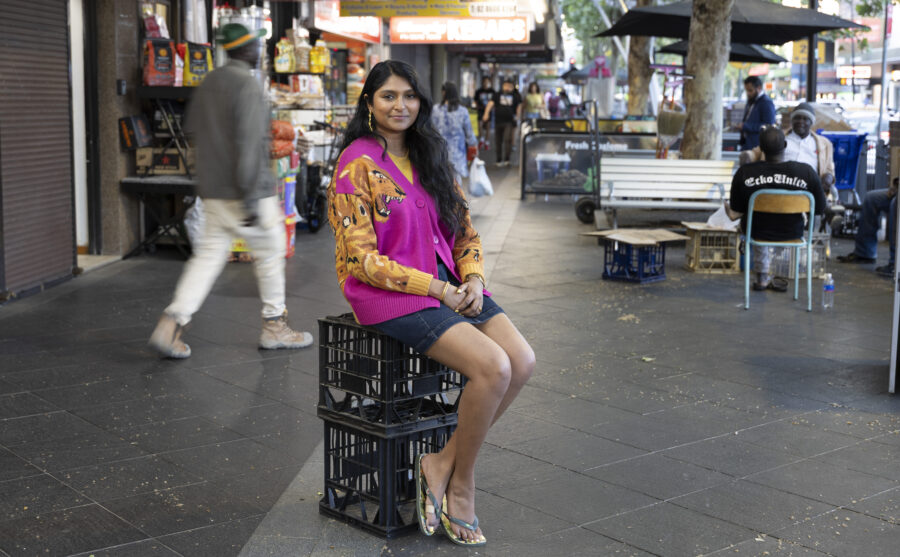Aboriginal art aims for sky

SINCE THE DAWN of our species, humans have been fascinated by the night sky, and celestial objects such as stars or planets feature in some of humankind’s most ancient artworks.
For some Aboriginal groups, the stars have historically provided pointers to seasonal events or have been tied up in Dreamtime narratives.
For the Yamaji people of the Murchison region of WA, for example, the appearance of an emu-like shape along the Milky Way has signalled the start of emu-egg collecting season for thousands of years.
Aboriginal art of the night sky
Yamaji and other Aboriginal groups live a different lifestyle to their ancestors, but the night sky remains central to their lives and has now served as inspiration for new artworks.
The John Curtin Gallery in Perth, WA, recently hosted Shared Sky, an exhibition of indigenous art inspired by the stars and other celestial bodies. The project brought both Western Australian and South African artists together with scientists working at the Square Kilometre Array (SKA) astronomical research project.
The SKA will be a massive radio telescope, built of thousands of antennae and dishes spread over vast areas of both WA and South Africa, two of the most-radio-quiet Southern Hemisphere spots to observe the Milky Way.
When completed in 2025, the SKA is set to become the world’s most sensitive radio telescope, allowing scientists to address various questions, from testing the general theory of relativity to searching for signals of extra-terrestrial life.
Square Kilometre Array radio telescope
Following a visit from several Australian aboriginal artists to the Murchison Radio-astronomy Observatory at Boolardy Station, WA, the gears were set to create celestial art, says Charmaine Green, managing director of the Yamaji Art Centre in Geraldton, and one of the artists presenting work at Shared Sky.
The night sky is an “important part of Yamaji culture and forms part of our customs, traditions and beliefs which have been handed down for thousands of years,” she says.
“The Shared Sky art project was very intense for the Yamaji Art artists, with just five months to produce artworks,” Charmiane adds. “Artists created collages, collaborative sky map painting and installation of painted and yarn bombed disused antenna forms from the MRO Boolardy site along with carved emu eggs and paintings.”
Inspiration for one of her paintings of the constellation Coma Berenices started with hair, says Charmaine. “Of all the constellations I researched this one was very interesting to me because of the reference to a classical story concerning the hair of Berenice, the wife or Ptolemy 111 of Egypt, and it made me reflect on the role and importance of hair in Yamaji culture.”
Overall, the Shared Sky exhibition served as a major opportunity for indigenous artists in South Africa and Western Australia to share their stories, says Charmaine.
For the Yamaji it allowed them to “present a voice from the Midwest Murchison region of Western Australia to the rest of the world.”
See a selection of the artworks in the gallery attached to this story.




